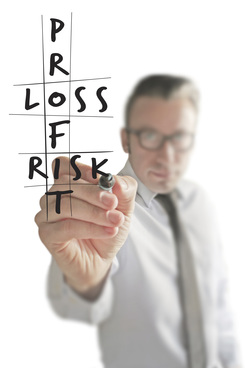Daniel A Schnapp

April 09, 2021 | New York Law Journal
Intermediate Copying, Artificial Intelligence and Best Practices for Counseling Music Clients in an Evolving Legal and Technological LandscapeIn this article, the authors look at the recent decision by the U.S. District Court for the Central District of California in the 'Tracy Chapman v. Nicki Minaj' case, and examine an evolution in copyright law that the recording industry must take close note of—intermediate copying, artificial intelligence, and its intersection with the doctrine of fair use.
By Daniel A. Schnapp and Alexis P. Grilli
8 minute read

July 22, 2020 | New York Law Journal
How Fashion Companies Can Reduce Litigation Risks and Strengthen ComplianceAn analysis of best practices and fundamental steps companies can take now to strengthen internal controls and implementing procedures to mitigate investigations and litigations risks in the future including provisions for written manuals, enterprise risk management, an update on TCPA risks, and some recommendations on how to police valuable intellectual property.
By Daniel A. Schnapp and Staci Riordan
8 minute read

March 14, 2016 | New York Law Journal
Pleading Lost Profits Damages in New York and Federal CourtsDaniel A. Schnapp and V. Chisara Ezie of Fox Rothschild examine the current jurisprudence and highlight recent case law in several different kinds of cases concerning the recoverability of lost profits, the evidence required for a party's burden of proof, and what potential defendants should consider in attacking such prima facie evidence.
By Daniel A. Schnapp and V. Chisara Ezie
13 minute read

November 09, 2015 | New York Law Journal
Before the Knock on the DoorDaniel A. Schnapp of Fox Rothschild writes: Beyond the costs associated with the internal investigation lie complex questions concerning the disclosure of the results of an internal investigation to the government, as well as the benefits and risks associated with such disclosure. Even while the government has attempted to incentivize such disclosure, questions remain as to the how, why, and when to disclose.
By Daniel A. Schnapp
12 minute read

November 08, 2015 | New York Law Journal
Before the Knock on the DoorDaniel A. Schnapp of Fox Rothschild writes: Beyond the costs associated with the internal investigation lie complex questions concerning the disclosure of the results of an internal investigation to the government, as well as the benefits and risks associated with such disclosure. Even while the government has attempted to incentivize such disclosure, questions remain as to the how, why, and when to disclose.
By Daniel A. Schnapp
12 minute read

April 06, 2015 | New York Law Journal
Trade Secret Theft and the Rise of the Private Right of ActionDaniel A. Schnapp, a partner with Fox Rothschild, writes: Individuals and organizations must immediately prepare protective measures to either avoid or ameliorate the inevitable rise of the private right of action in theft of trade secret cases.
By Daniel A. Schnapp
14 minute read

April 05, 2015 | New York Law Journal
Trade Secret Theft and the Rise of the Private Right of ActionDaniel A. Schnapp, a partner with Fox Rothschild, writes: Individuals and organizations must immediately prepare protective measures to either avoid or ameliorate the inevitable rise of the private right of action in theft of trade secret cases.
By Daniel A. Schnapp
14 minute read
September 30, 2013 | New York Law Journal
Modern Government Investigations Embrace Technological AdvancesDaniel A. Schnapp and Ernest E. Badway, partners at Fox Rothschild, discuss the impact of the complex technology used in the financial world, the manner it may be used to run afoul of securities and other laws, as well as the government's development of tools to address the situation.
By Daniel A. Schnapp and Ernest E. Badway
13 minute read
September 12, 2011 | New York Law Journal
Calculating Monetary Damages In Theft of Trade Secrets CasesFox Rothschild partners Daniel A. Schnapp and Ernest E. Badway discuss the methods of proving and obtaining monetary damages, as interpreted by the New York federal and state courts. They also examine a methodology in a recent case involving the loss of complex technology, including the court's review of proffered expert testimony.
By Daniel A. Schnapp and Ernest E. Badway
13 minute read



